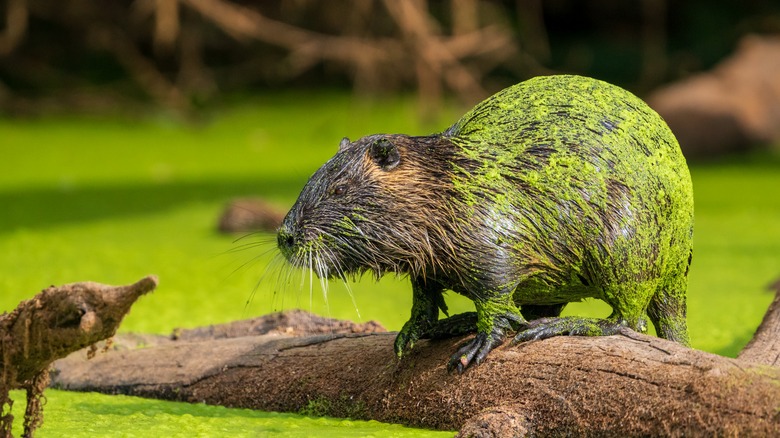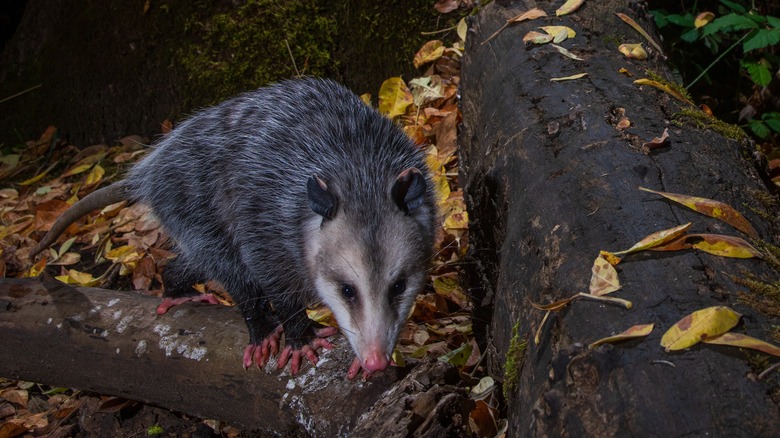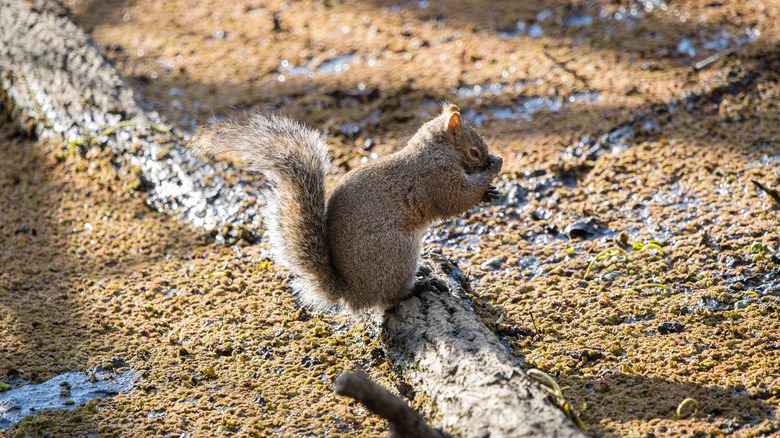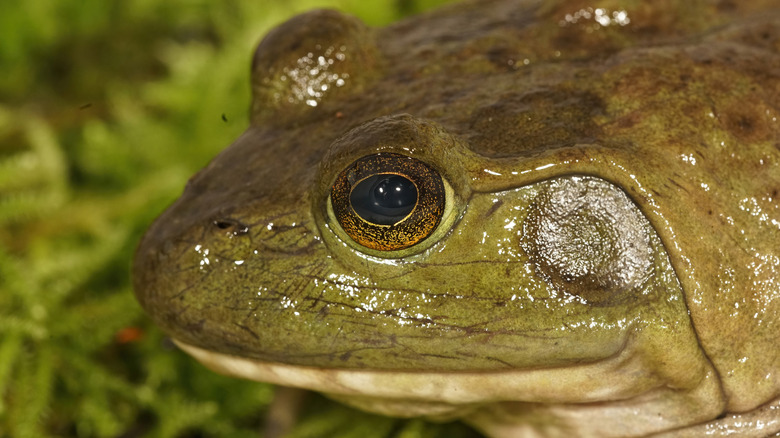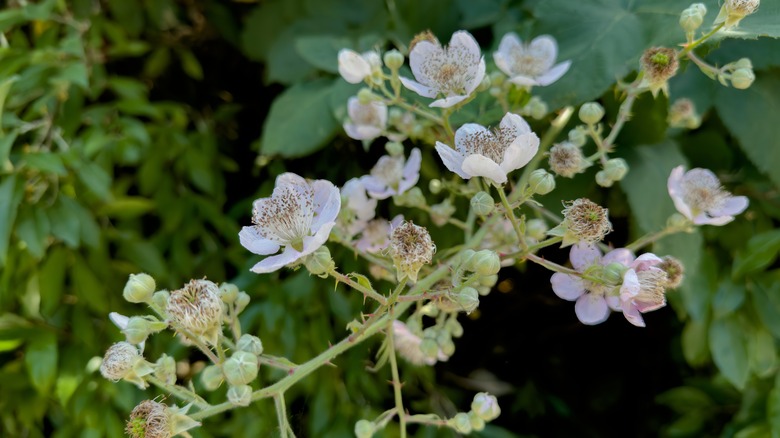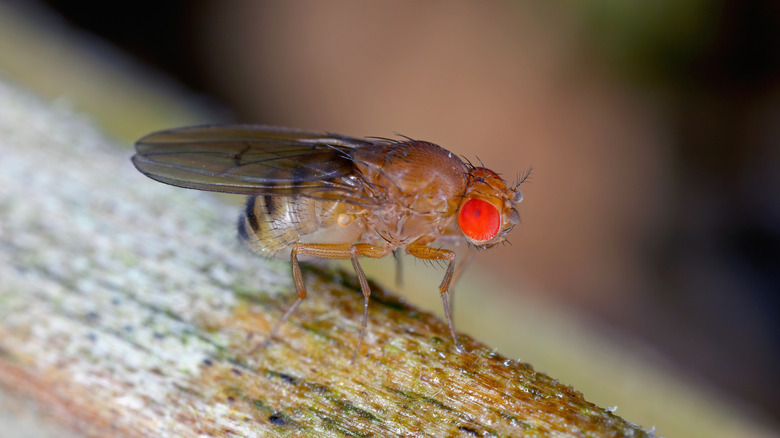7 Invasive Species That Are Wreaking Havoc In Oregon
Invasive species are a major issue in many natural environments around the world, and that's no different in the United States. The west coast is of particular concern as it has some of the most impressive biodiversity of anywhere in the world. Sadly, there are multiple invasive species devastating California, the most biodiverse state in the country. But it's not just the Golden State that needs to worry about protecting its plants and wildlife from invaders.
Just north of that particular invasive-species battleground is Oregon, which is home to some impressive biodiversity of its own. The state has multiple biomes and ecosystems, from rain forests and dry ponderosa pine forests, to prairies, deserts, and even alpine meadows. It also hosts hundreds of plant and animal species. Oregon is home to roughly 140 terrestrial mammal species, 30 amphibian species, and 30 reptile species. Add to that 275 bird species that breed in the state alongside 85 that migrate through it, and you have an extremely rich and diverse natural environment.
Unfortunately, the Beaver State is facing threats from numerous invasive species, plants and animals that are not native to Oregon's ecosystems and which cause harm to existing native species by competing for habitats, food, and water. They also damage natural environments and can cause significant strain on the economy, making them a real problem for the state. Here are seven of the most destructive invasive species in Oregon.
Emerald ash borer
The emerald ash borer is a menace to not just Oregon but the United States as a whole. This deceptively alluring insect is one of the most concerning invasive species destroying Illinois and one of several invasive species wreaking havoc in Indiana. Originally from Asia, the pest was discovered in the eastern U.S. back in 2002 but it has since spread across the north of the country, leaving a path of devastated ash trees in its wake.
The pernicious insect is known for digging into the trunks of ash trees and depositing its larvae, which kills the trees within three to five years. After destroying tens of millions of ash trees in the northeast the insect continued its rampage, becoming notorious for being the most destructive forest pest in North America and ultimately killing hundreds of millions of ash trees across the country. Now, the emerald ash borer has found its way to the west coast.
On June 30, 2022, this particularly nasty invader was found in Forest Grove, Oregon, and as of August 2024, it had been recorded in four counties within the state. According to Oregon State University, the emerald ash borer will kill most of the ash trees in Oregon's forests and urban planting areas in the coming decades. It's not just Oregon that needs to worry, either. The insect has already proven its ability to travel from state to state, and with several ash forests in Washington and California, the west coast looks set to be the latest area of the U.S. to face the ash borer's relentless advance.
Nutria
As invasive species go, the rat-like kind are surely some of the most undesirable. Nutria are semi-aquatic rodents that have become a major pest in Oregon where they have run roughshod over the natural environment. Native to South America, the nutria can be identified by their hunched bodies, almost hairless tails, and webbed toes on their hind feet. Their eyes, nostrils, and ears are also high on the sides of their heads to allow them to live in aquatic environments.
The animals were intentionally introduced into North America, including Oregon, for fur farming in the 1930s before that particular industry went bust a decade later. As a result, thousands of nutria were released into the wild in Oregon and they have been expanding ever since. The species can now be found from Northern California to southern British Columbia where they have burrowed along the banks of rivers, causing erosion in the process. This erosion doesn't just affect the river banks, either. It can weaken roadbeds, dams, and dikes, putting them in danger of collapse.
What's more, nutria eat a wide variety of crops including fruits, grains, and vegetables. As if that wasn't enough, in large groups, nutria can cause major trouble for natural plants, damaging vegetation on which other wildlife relies to survive. It doesn't help nutria are very aggressive, especially when it comes to fending off the muskrat which is native to Oregon, but smaller than the nutria. As the Oregon Department of Fish and Wildlife notes, muskrats have been largely eliminated or had their numbers reduced dramatically in areas where nutria have become established.
Virginia opossum
Although native to the southeastern United States, opossums were introduced to Oregon as pets in the 1910s and are the only marsupials native to the U.S. As is the story with so many invasive species, however, many opossums were released into the wild and became established in northwestern Oregon.
The cat-sized mammal is nocturnal and identifiable by its pointed nose, leathery ears, small eyes, and scaly tail. Though they're certainly cute in their own way, the animal is also quite the pest. Opossums are omnivores, which mean they eat a varied diet that includes insects, rodents, frogs, birds, and berries. This obviously means they impact life for these other species in Oregon but they can also cause damage to property when they dig up lawns looking for insects to eat, or leave trash strewn in streets after searching through garbage cans for food. What's more, opossums carry and transmit diseases to both pets and people, including leptospirosis, tuberculosis, coccidiosis, spotted fever, tularemia, and more. They also serve as hosts for fleas, ticks, lice, and mites. They might be cute in their own way, but these particular pests cause a whole host of issues for any state in which they reside, including Oregon.
Eastern gray squirrels
Oregon is home to many native squirrel species including chipmunks, ground squirrels, tree squirrels, and even flying squirrels. Sadly, you're also likely to see the more common invasive species of eastern gray squirrels which is native to the east coast of the U.S. but which was introduced to Oregon in 1918. Sadly, the eastern gray squirrel quickly spread and has displaced many native squirrel species.
According to the Oregon Department of Fish and Wildlife, the eastern gray squirrel is capable of wiping out native squirrels within five to 10 years, though the species is mostly concentrated in the Willamette Valley. While it is slightly smaller than the native western gray squirrel, it is more than capable of taking over habitats and causing damage to native species, and is also known to carry the parapoxvirus, which is deadly to red squirrels, also native to Oregon.
Not only do these non-native squirrels aggressively compete with native species for food and habitat, they can expand their range much more quickly and are often helped by humans, who sometimes release them in rural areas.
American bullfrog
The American bullfrog is native to the eastern United States, but has become well-established in Oregon and in many other areas including Asia, Europe, and South America. The frog was brought to the west coast in the early 1900s and has since become one of the most pernicious invaders in Oregon, competing with native wildlife for food and habitats, even eating other frogs. The American bullfrog also eats young turtles and ducklings, and have been known to devour their own young.
Making matters worse is the fact that they are remarkably resilient and can survive in all sorts of climates and regions. They can also reproduce at an incredibly fast rate. Bullfrogs lay nearly 10 times more eggs than other native frogs with female bullfrogs laying up to 20,000 eggs at one time, while native frogs lay between just 2,000 and 5,000 at a time. As such, bullfrog numbers have exploded at the expense of native frogs and other wildlife. In fact, the bullfrog could impact the recovery of the threatened Oregon spotted frog which is vulnerable to the larger bullfrogs. American bullfrogs also pose a threat to native frogs by spreading ranavirus and the chytrid fungus, which can be deadly for native amphibians.
Himalaya blackberry
Himalayan blackberry, also known as Armenian blackberry, is an invasive plant that has spread across the Pacific Northwest and is one of the most disruptive of all noxious weeds in western Oregon. This perennial blooms from June to August, producing large stems that stand upright and can grow to more than 20 feet high. These stems also have large thorns and feature serrated leaves and white or light pink flowers.
While the flowers themselves aren't the most unattractive thing ever produced by an invasive species, the Himalayan blackberry is a very disruptive invader, displacing native species and vegetation and degrading habitats on which local wildlife depends. Since the plant prefers riparian areas (wetlands on the banks of rivers and streams), it also directly contributes to bank erosion.
The plant originated in Armenia but was brought over from India to the northwest U.S. in the 1880s by botanist Luther Burbank. Of course, it quickly spread throughout the Northwest, including Oregon where it has taken over at least 1.6 million acres of land. The plant lives for many years and costs millions of dollars to control throughout the state, with estimates putting the damage at $40 million a year. This problem is made worse by the fact the blackberry plant is easily spread via birds and mammals that eat the berries and help disperse the seeds throughout natural environments. As if that wasn't enough to make the Himalayan blackberry a major pest, it also provides food for other pests, namely the spotted wing drosophila, which dines on the berries produced by this invasive plant.
Spotted wing drosophila
Back in 2009, a new pest was discovered in Oregon that was attacking healthy fruit. Called the spotted wing drosophila, it originates from Asia but is now widespread throughout the U.S., Europe, and South America, possibly as a result of being introduced via imported fruit from Asia.
Oregon hasn't been spared in the expansion of this invasive pest. What makes this drosophila species so pernicious is that, unlike other fruit flies, its females lay eggs in healthy fruit such as cherries, blueberries, and raspberries. Once hatched, the larvae feed on the inside of the fruit for between five to seven days, which is, as you might expect, devastating for the fruit itself, and by extension, the economy. Damage from the spotted wing drosophila and other invasive insects is estimated to cost the agricultural industry in the U.S. around $500 million a year. In Oregon, where blueberries are one of the state's most valuable crops and one of the spotted wing drosophila's favorite fruits to target, the need to control this pest is particularly urgent.
In 2024, after studying the spotted wing drosophila for 12 years, Oregon State University announced plans to release a tiny wasp capable of controlling the fruit fly. The parasitoid wasp kills the spotted wing drosophila by laying eggs inside the insect. When those eggs hatch, the larvae consume the fruit fly. This is just one of many approaches the state is taking to minimize the impact of this nasty invader which has been menacing the state's fresh fruit for more than 15 years.


